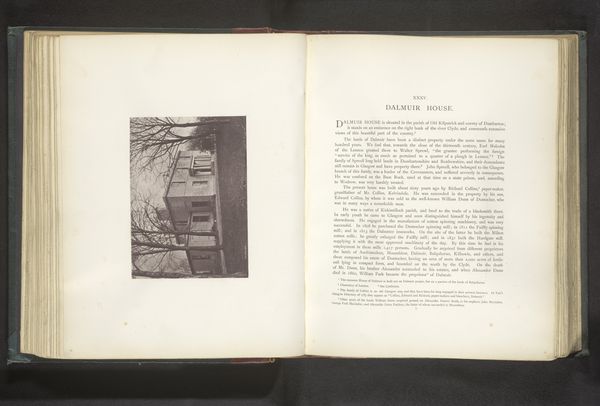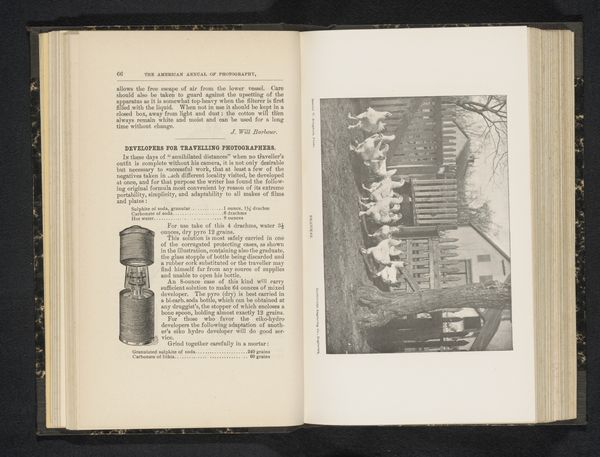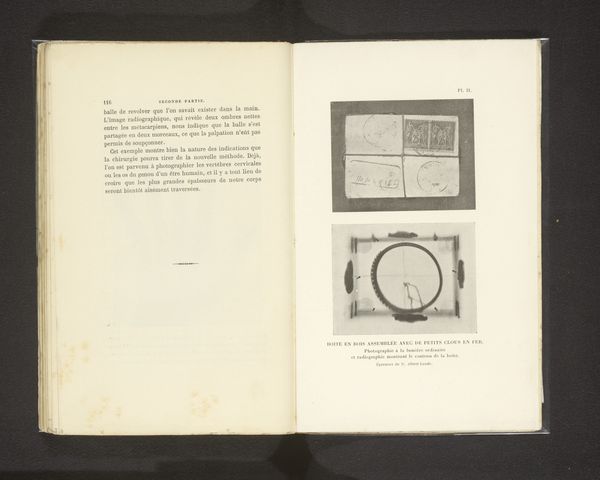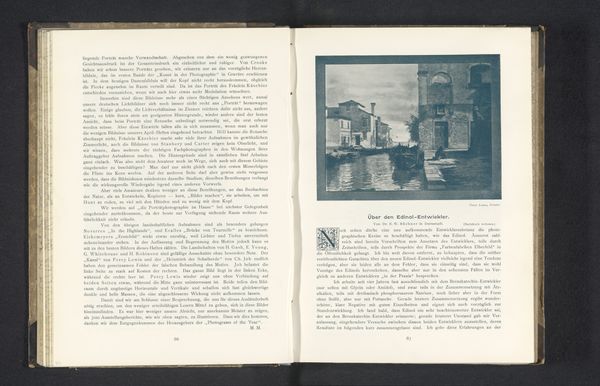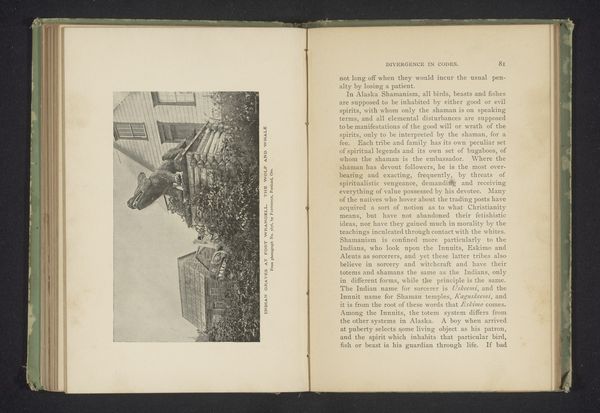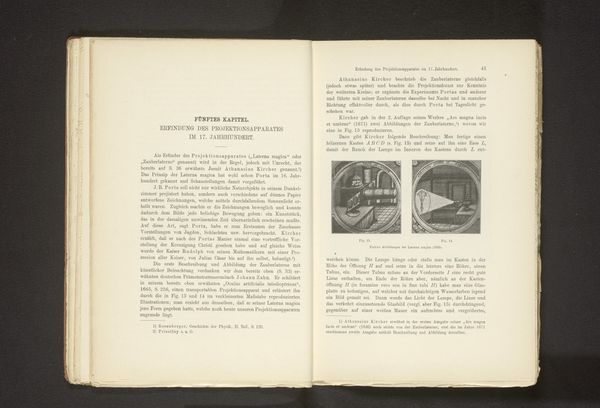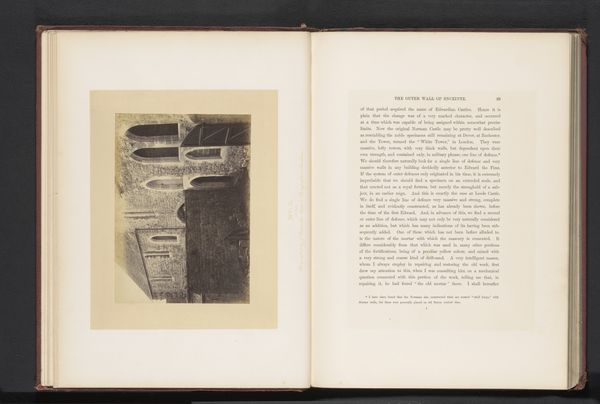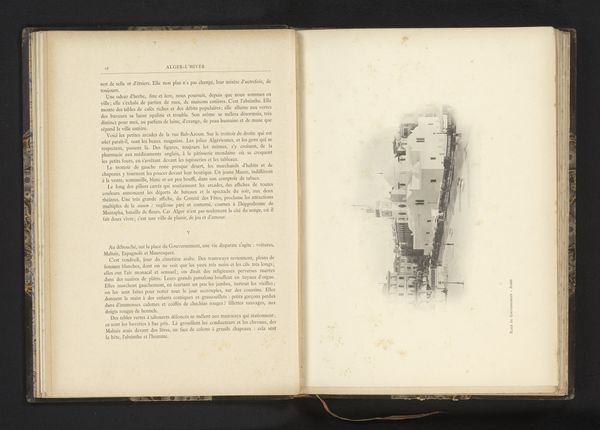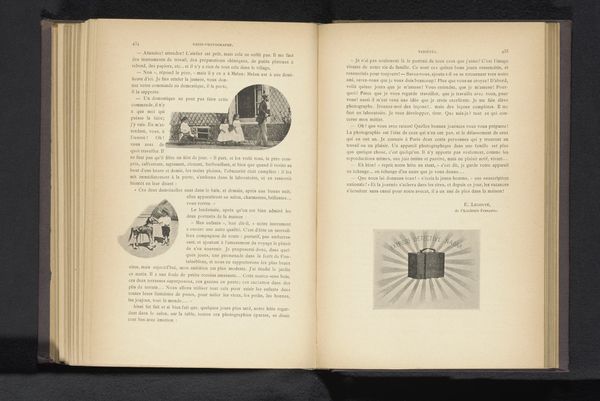
print, textile, paper, photography
#
still-life-photography
# print
#
textile
#
paper
#
photography
Dimensions: height 73 mm, width 115 mm
Copyright: Rijks Museum: Open Domain
Editor: Here we have a print entitled "Gezicht op een machine om vodden te vermalen," or "View of a machine for grinding rags," made before 1876 by Appleton & Co. It’s an image of industrial machinery within a book, photographed in a way that almost feels like a portrait. What strikes me most is the juxtaposition of the technical subject matter with the texture of paper and possible textiles. How do you interpret this work? Curator: It’s fascinating how a seemingly straightforward image of machinery can open up avenues into understanding the sociopolitical context of its time. Think about it: a machine designed to grind rags. What does that tell us about the textile industry, about labor, about waste, and about the cyclical nature of consumption even then? Who benefits, and at what cost? Editor: So, you're saying that beyond the image itself, we should consider what it represents in terms of broader societal structures? Curator: Exactly. Photography was still a relatively new medium then. Its use here isn’t just documentation, it’s implicitly commenting on the rise of industrialization and its impact. What’s being lost, perhaps deliberately buried beneath a sheen of progress, for whom is the image aimed, and why? Consider the potential link between this image and issues of class, exploitation, and environmental degradation – these are not just contemporary concerns, they have deep historical roots. Editor: That’s a powerful way to look at it. I hadn’t considered the environmental aspect or the commentary on labor. I was mainly drawn to the composition. Curator: Composition matters, but it's always in dialogue with its cultural moment. What this work asks of us, perhaps, is to excavate the forgotten or overlooked stories embedded within the frame, within a capitalist model that thrived during this time. The textile industry relied on hidden labour; is this picture highlighting and dignifying that labor or further obscuring it? Editor: This makes me realize there’s always a deeper, often uncomfortable, narrative to uncover. Thank you, this was incredibly helpful. Curator: My pleasure! Seeing art as a form of historical and social inquiry expands how we read the image.
Comments
No comments
Be the first to comment and join the conversation on the ultimate creative platform.
